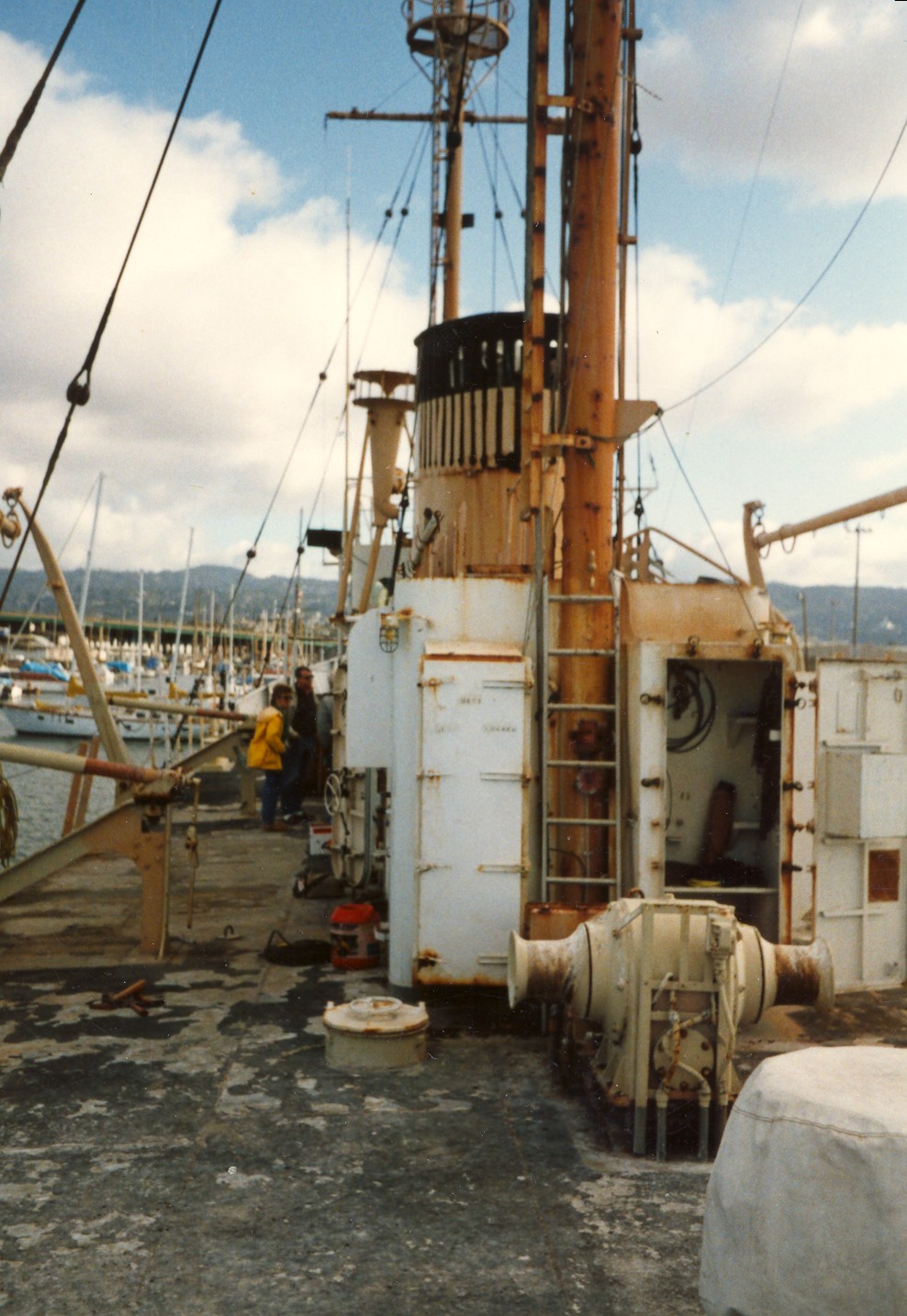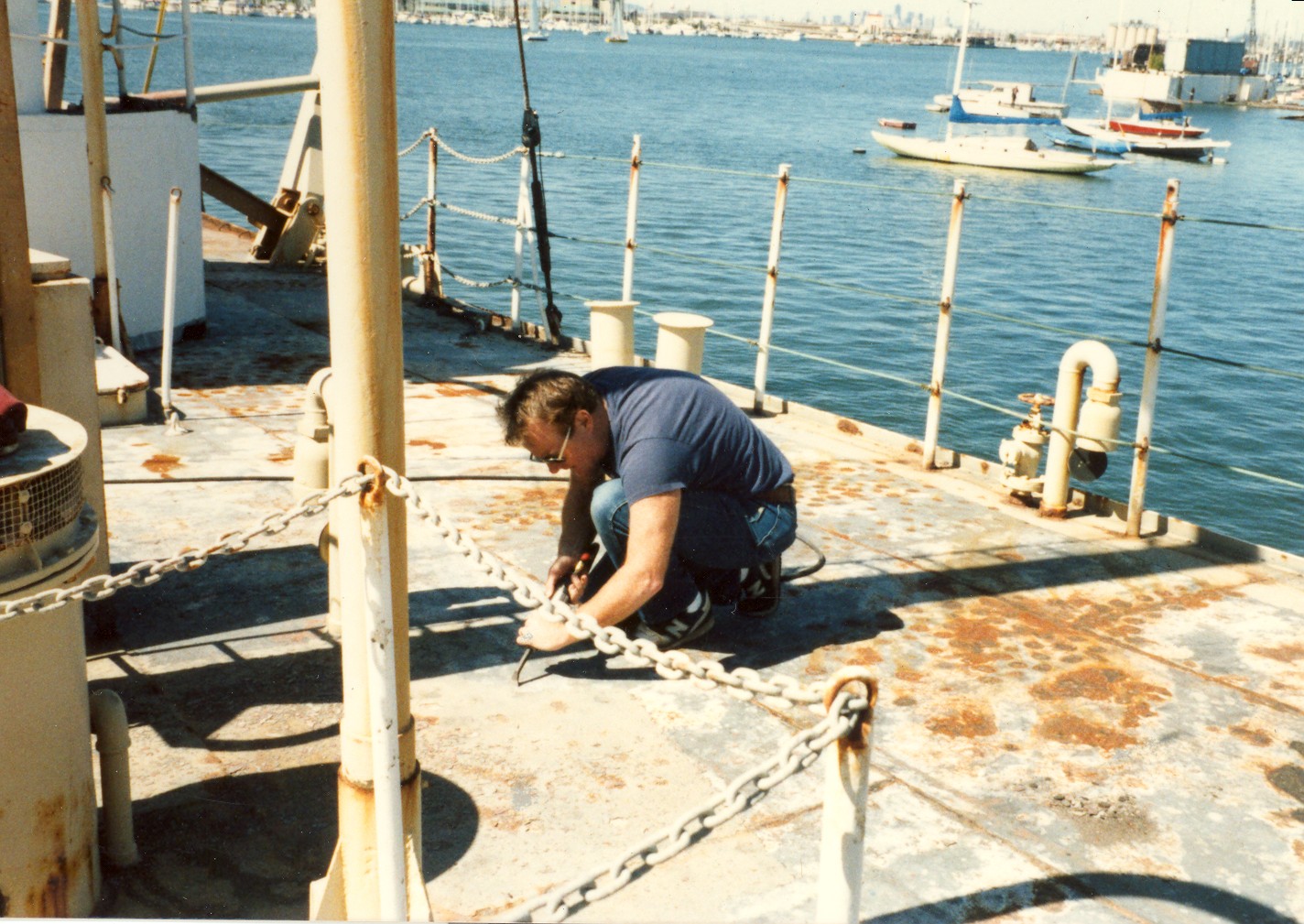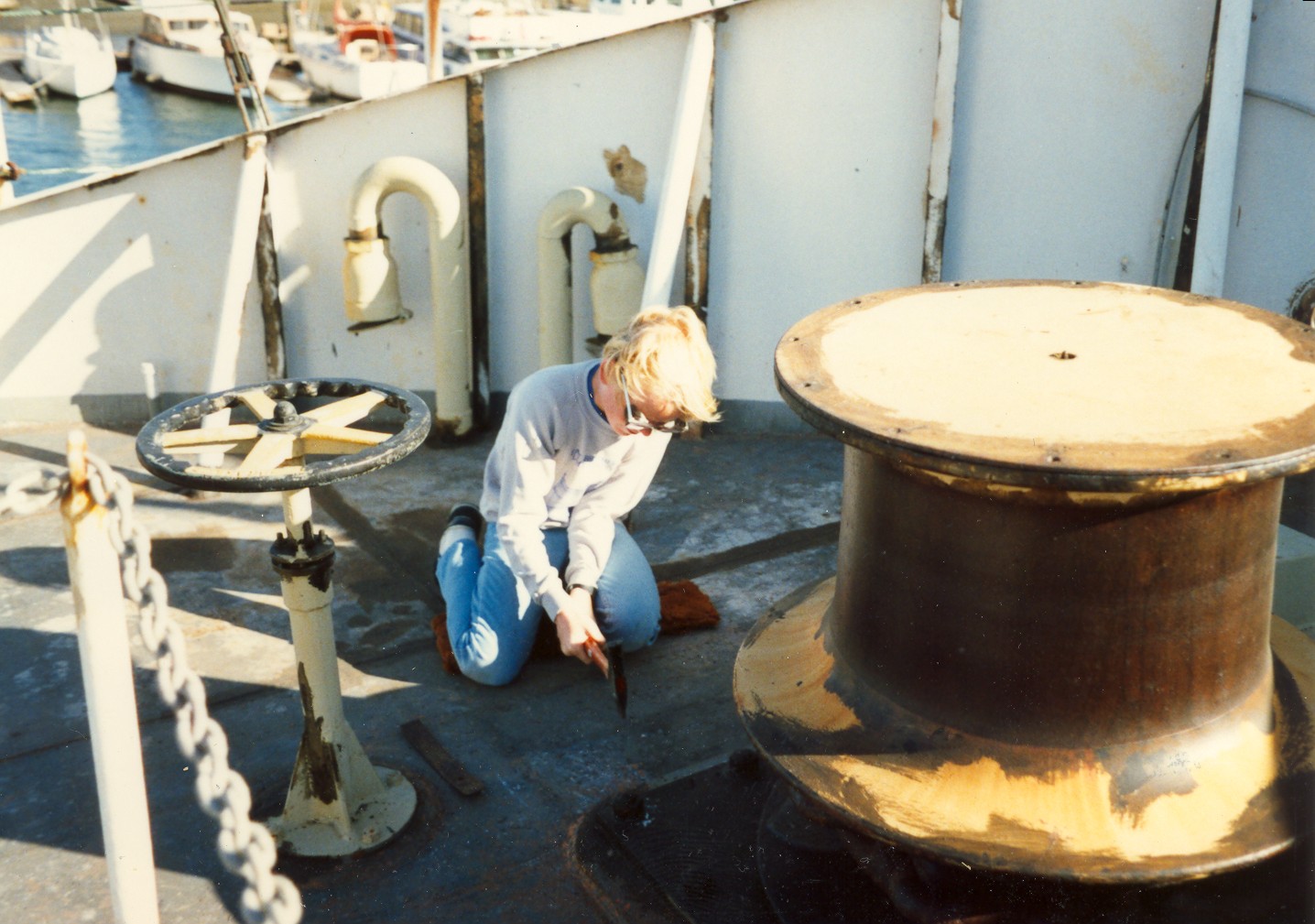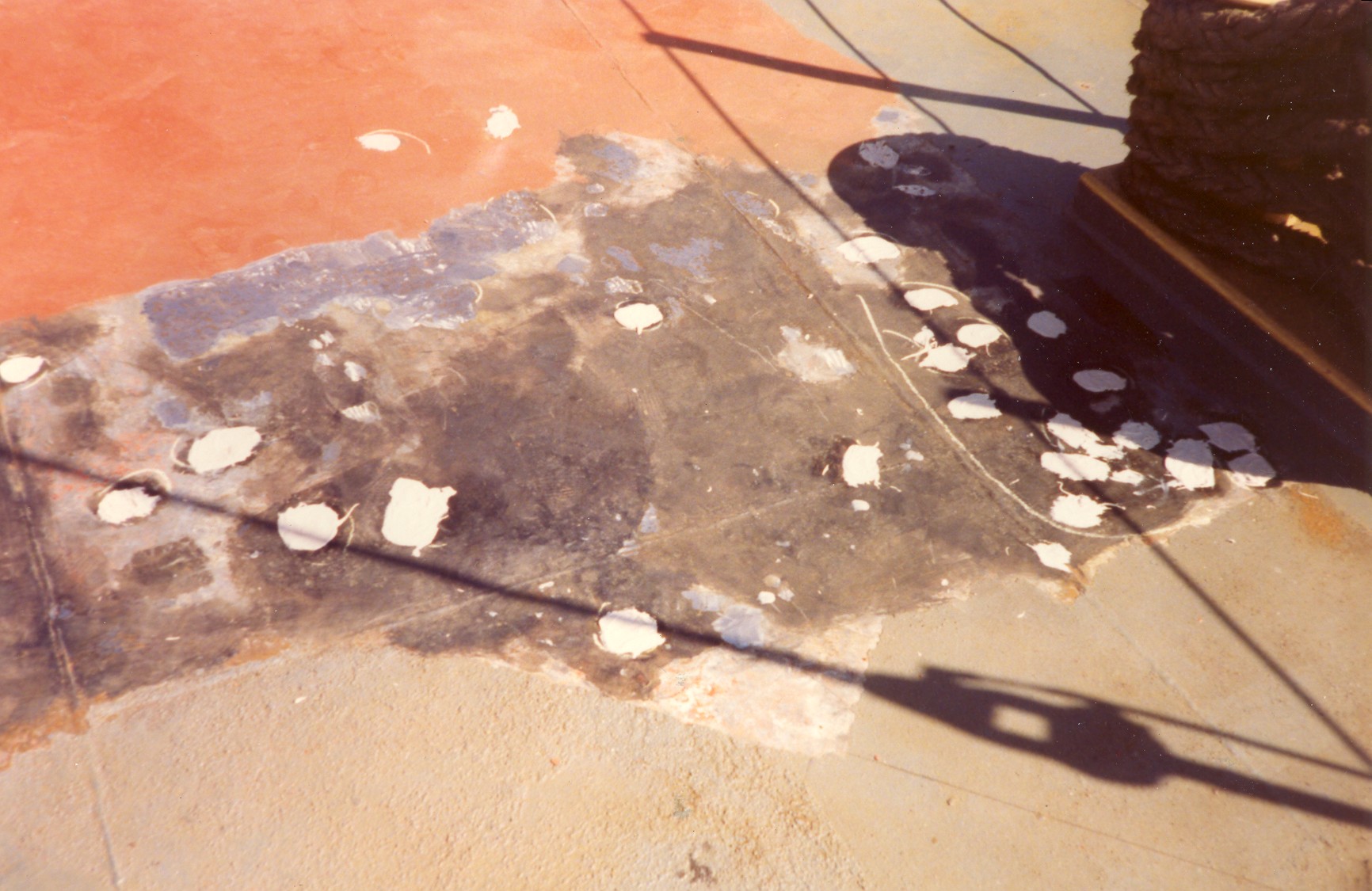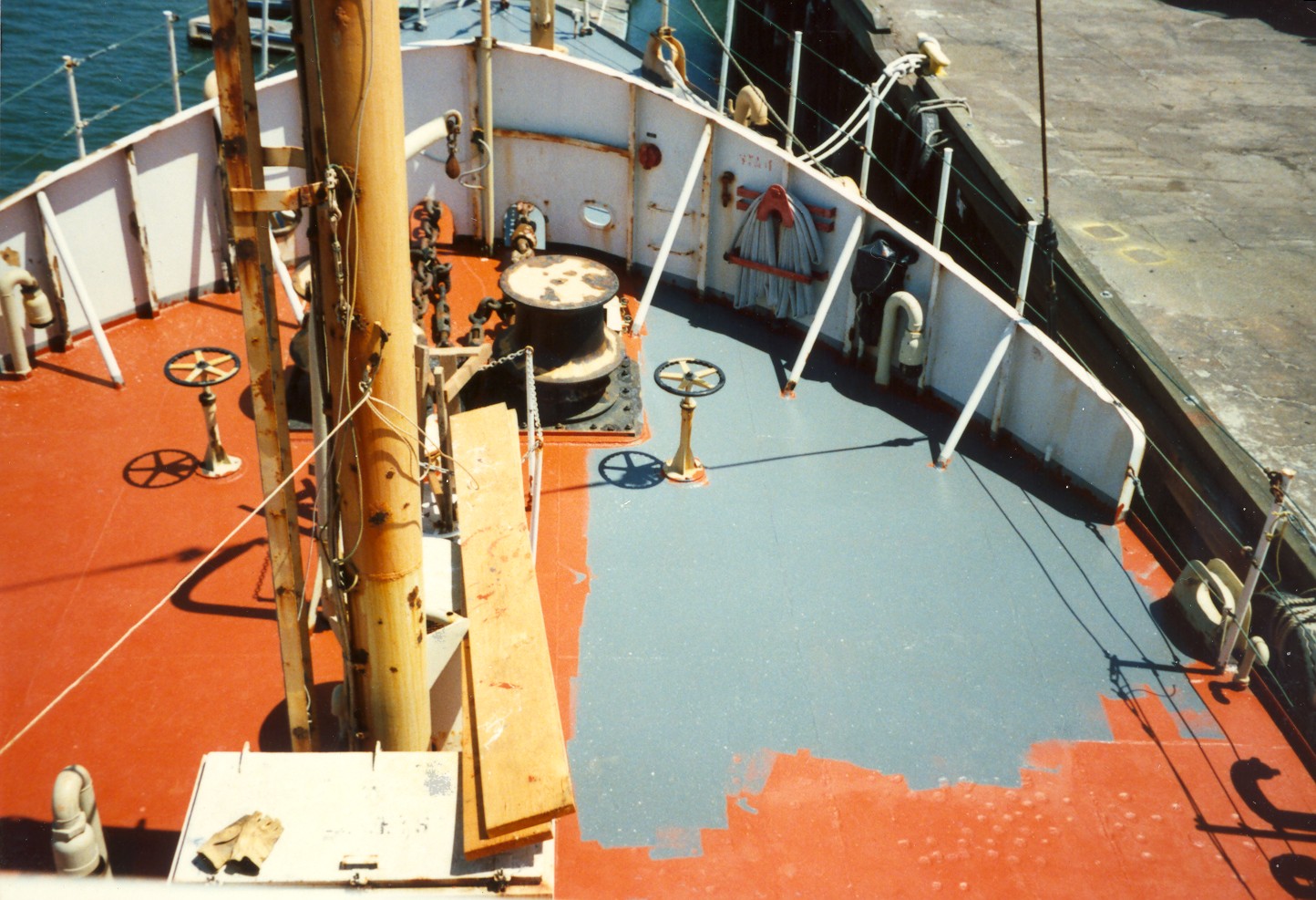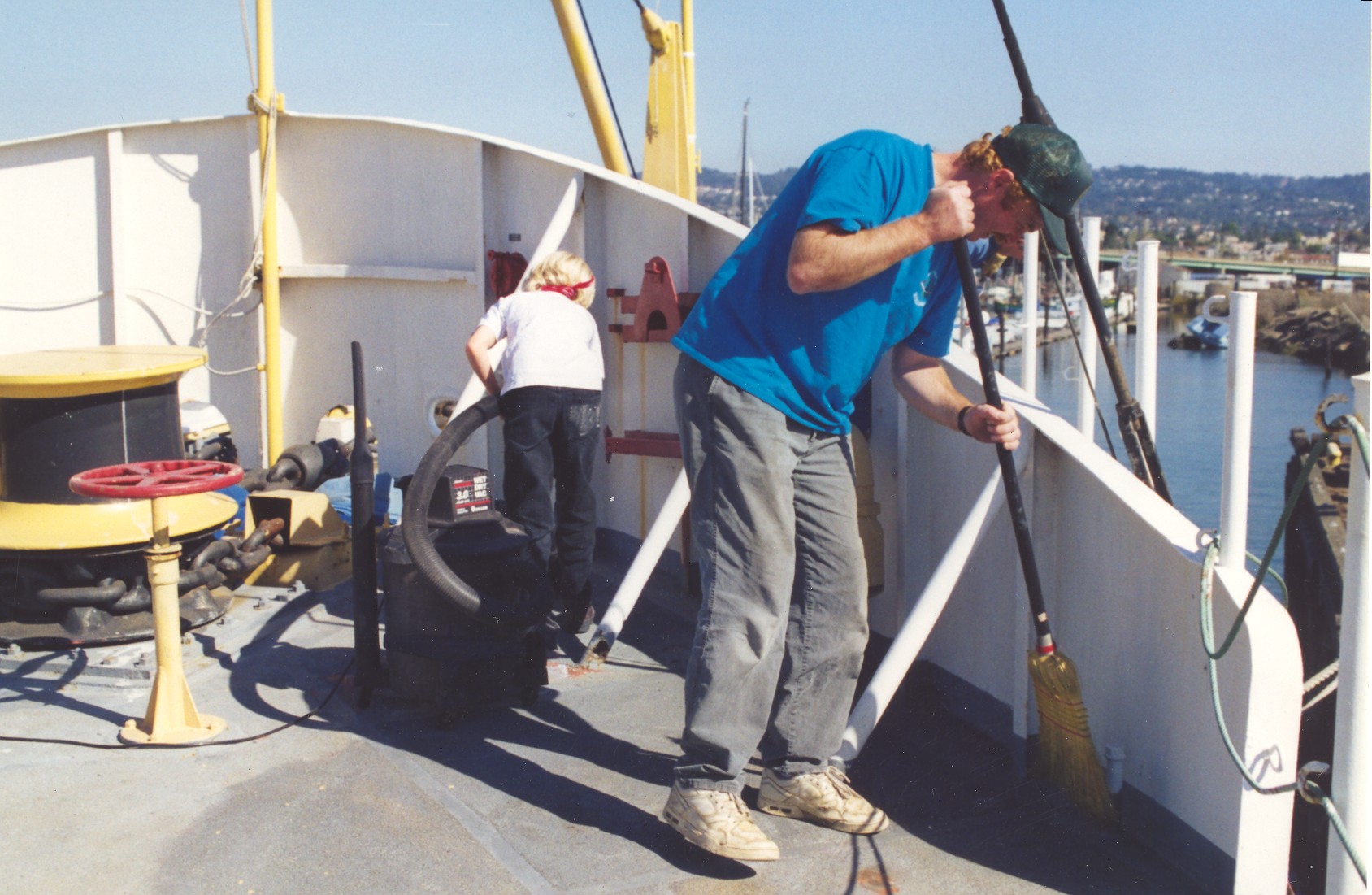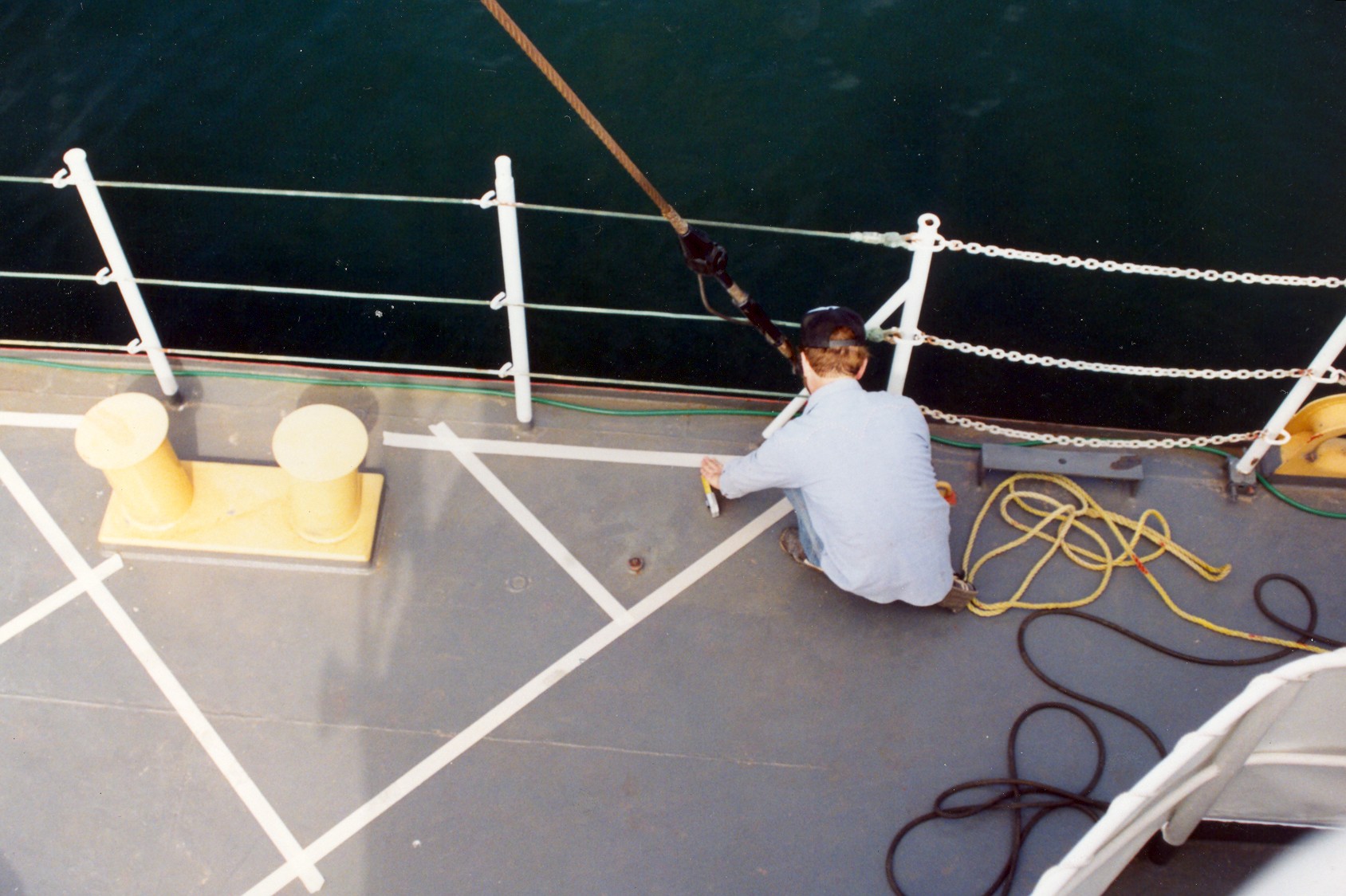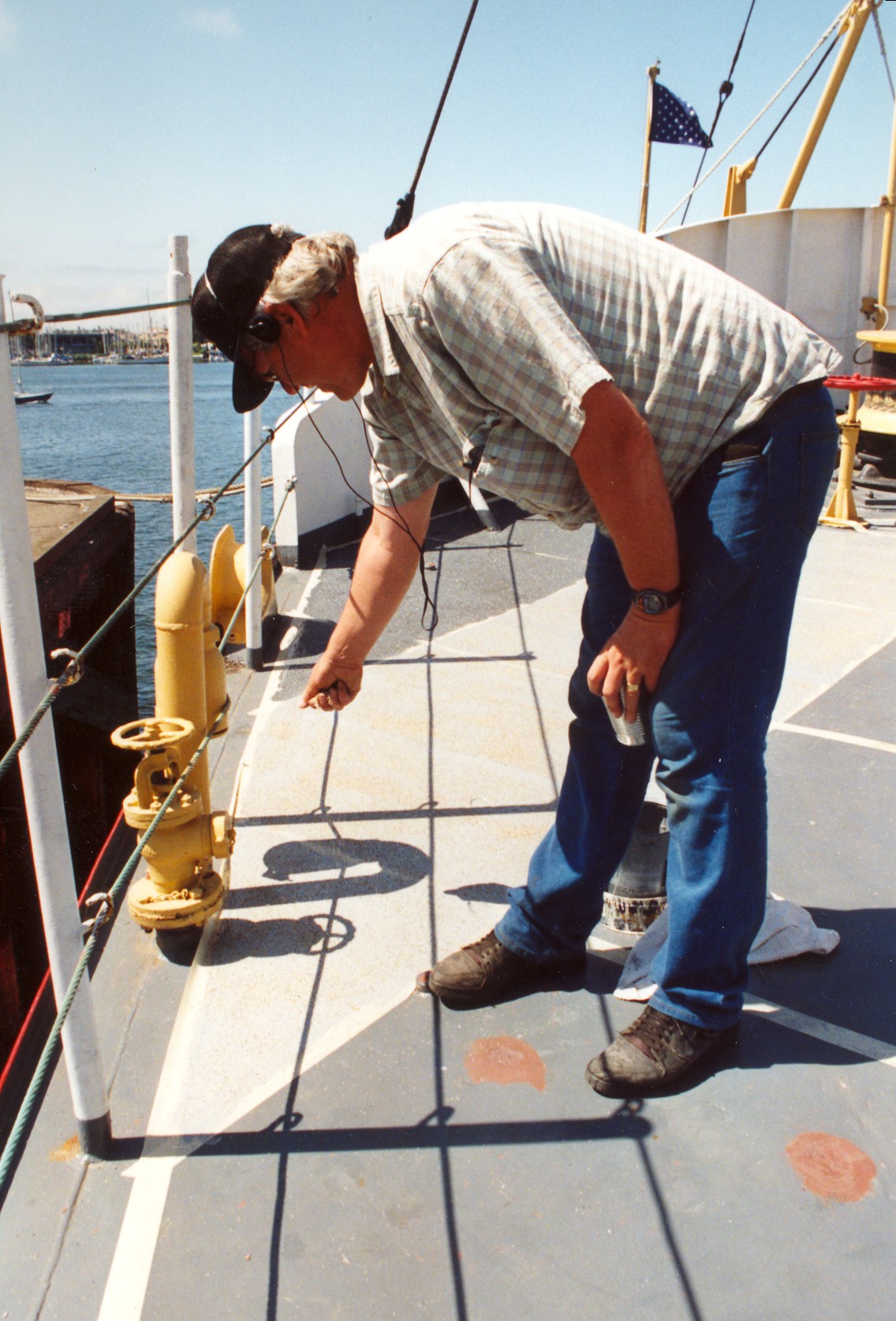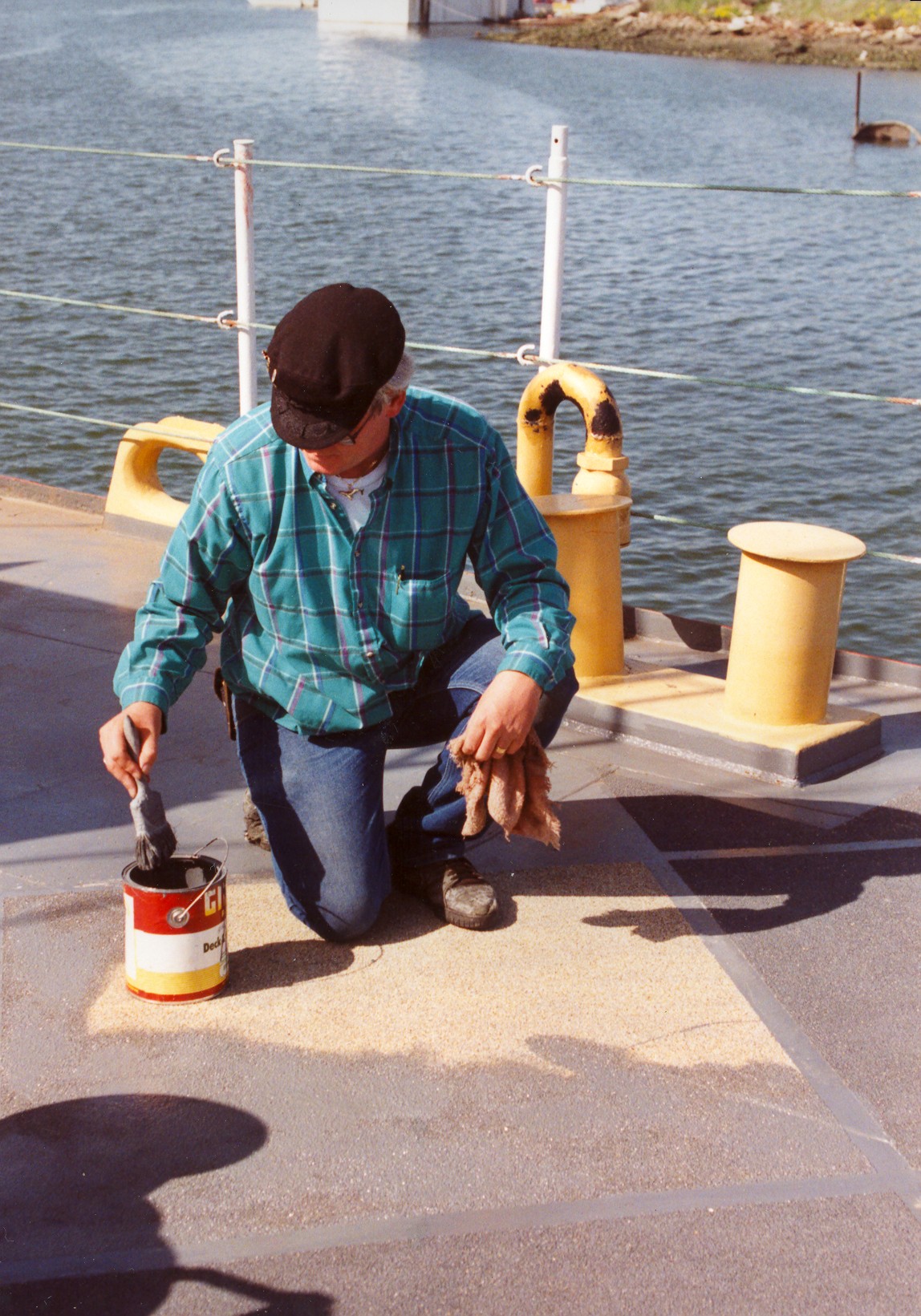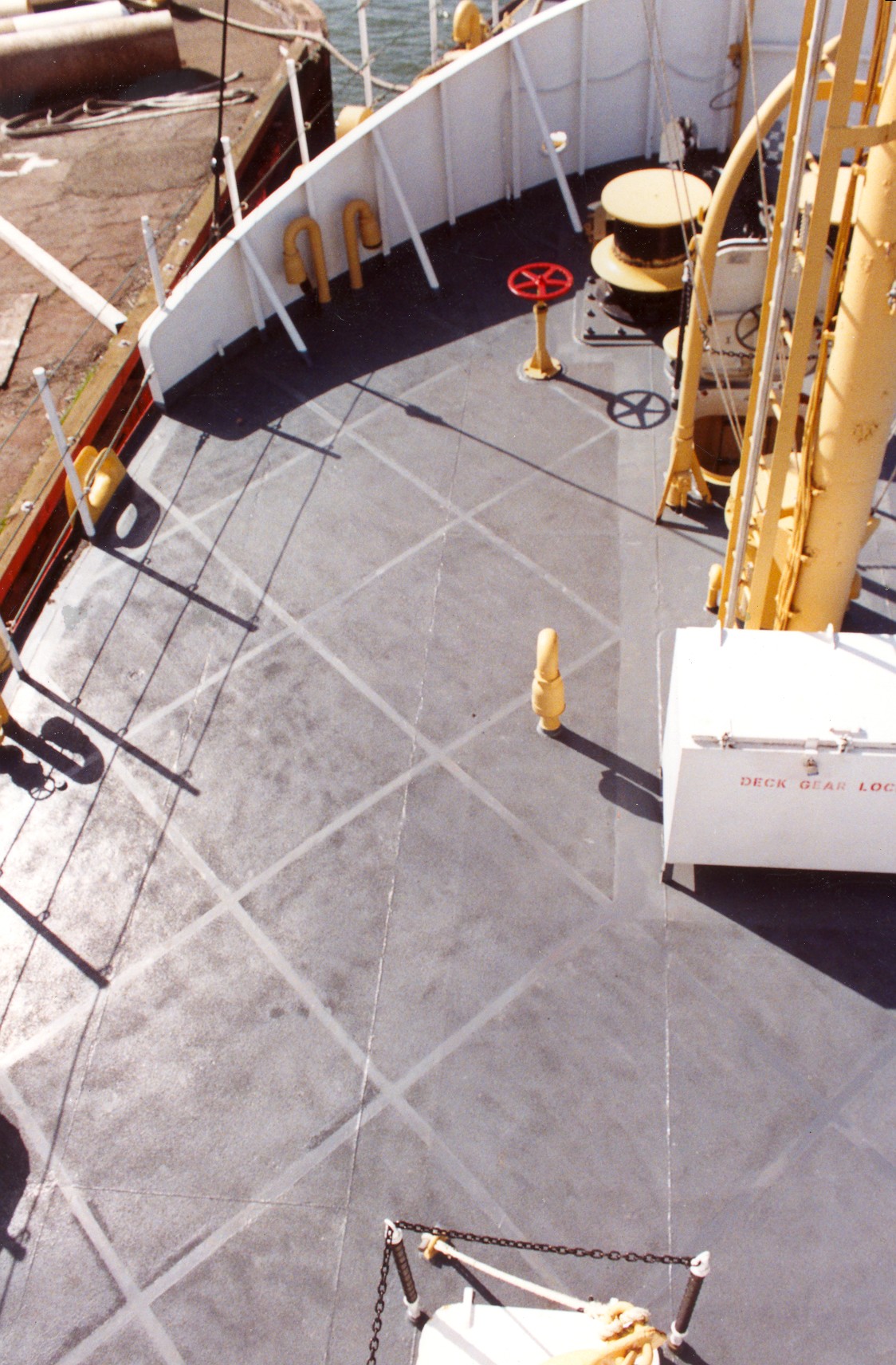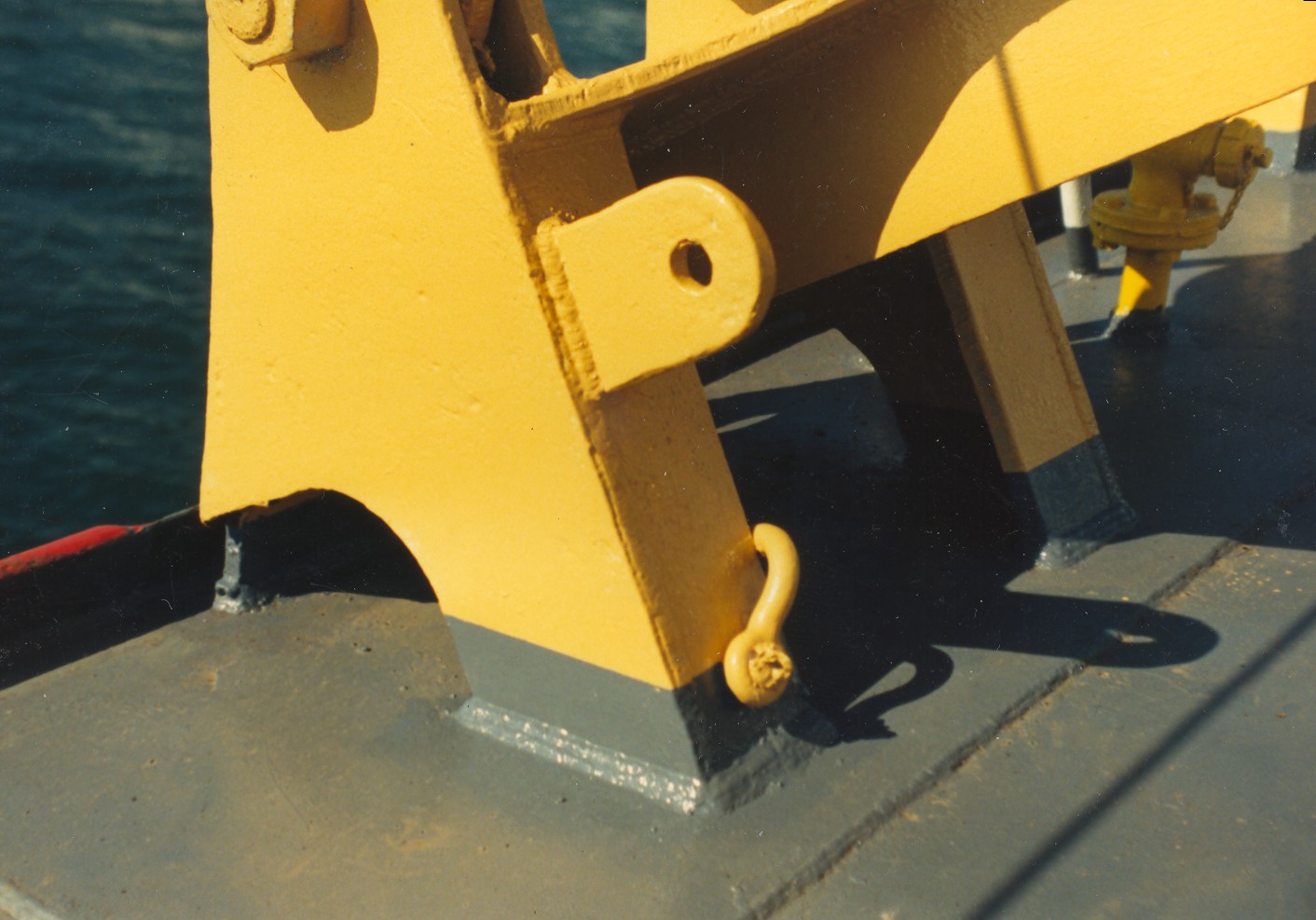After acquiring the lightship, the U.S. Lighthouse Society had established three primary goals for the ship:
- Restore the ship to "In Commission" appearance.
- Dry-dock the ship to perform needed underwater repair work.
- Find a permanent berth for the ship, accessible to the public for dockside tours.
Before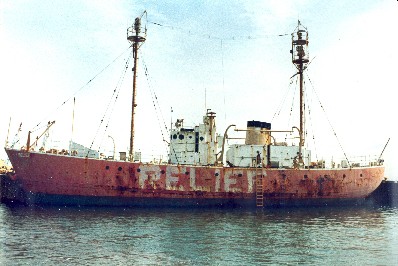
The actual lightship restoration work began after the ship arrived at Oakland's Ninth Avenue Terminal, in February of 1987. Since the terminal was a secure facility, the crew had no vehicle access on to the dock. All supplies and personnel had to transfer by rowboat from the adjacent marina, up the side and on to the ship. This proved to be an arduous chore, especially in foul weather.
The restoration began under the capable leadership of Walter Fanning, who had recently completed restoration work on East Brothers Island Lighthouse, in San Francisco Bay. Walter was a skilled craftsman and had access to a fully equipped machine shop. At the time, he was also the Vice President of the U.S. Lighthouse Society.
Generally, work progressed in phase with the weather, with topside work being done in the spring and summer; below deck work was done in the fall and winter. At the start of the project there were approximately 20 regular and semi-regular volunteers. This number dropped off significantly after the initial enthusiasm of the first year. Projects during the first few years included:
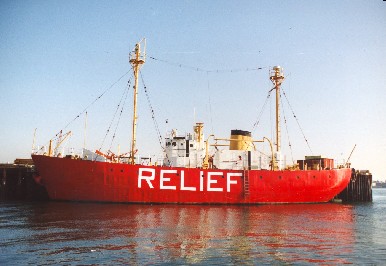 After
After
Construction of the floating scaffold to allow work on the hull above the waterline. Painting of the hull above the waterline. Cutting out and replacement of wasted metal in the main exhaust stack. Removal of a deep freezer on the main deck, not originally installed on the ship. Removal of the deteriorated aft mast gallery, not originally installed on the ship. Removal and restoration of the yardarms, installing new blocks and stringing new halyards. Main deck restoration as described herein.
The initial restoration effort took about five years and 9,500 man-hours. This would be up to the point that the Society felt the ship was really ready to open to the public on a long term basis. By the spring of 1992, the ship was indeed all dressed up but had no place to go. Time marched on… weeks turned into months, months turned into years. Still, there was not a word on our dry-docking or news of a permanent berth.
As time passed, it began to appear that for this project, there was "no light at the end of the tunnel". Slowly, our pool of volunteers dwindled down to only a few. Naturally, as manpower decreased, deterioration increased until finally at the end of the decade there was considerable topside catch-up work to be done.
Fortunately, at about this time things began to change for the better. Funding for our drydocking was approved and in the works. Plans for a berth for the ship at Jack London Square were beginning to materialize, and by the year 2000 things were starting to get back on track. By June of 2002, we were ready to move the ship to our new berth and open to the public, our three primary goals had been accomplished.
In the fall of 2012 the lightship was transfered from the US Lighthouse Society to the Anchor Program in Oakland CA to be used as a training vessel.
Details of Lightship RELIEF:
- The official name of the vessel is WLV605. "W" designates it as a Coast Guard vessel, "L" for Light and "V" for vessel. The ship is built of steel to Navy specs in 1950. The ship is 128' long, 30' beam, 11' draft, and displaces 617 tons.
- It has two anchors, the Mushroom on the bow weights 6,750 pounds and there is a 5,000 pound standard navy back-up anchor on the starboard side.
- The engine is an 8 cylinder diesel developing 550 horsepower and turns a 7 foot diameter propeller. The engine is direct-reversible, connected to the propeller shaft through a reduction gear. To put it in reverse, you have to stop the engine and re-start it in the opposite direction - something not done speedily.
- The forward mast contains 2 light beacons (the second one is a backup) developing 15,000 candlepower that is visible for up to 14 miles. It flashes every 10 seconds (different ships had different flash signals so they could be identified). The light at the top of the mast is 67' above water.
- The foghorns (2) are air driven diaphones - a 2 tone blast (diatone) every 30 seconds.
- In addition, the ship put out a continuous radio signal on the antenna between the masts at 320 kHz that ships could home-in-on with an identifying Morse code signal; in the case of San Francisco Station it consisted of 2 dashes (letter M).
- There were 18 crew assigned but only 12 would be aboard the ship on station while the other 6 were "on the beach" for shore leave. They would rotate every 2-3 weeks when the supply ship came to deliver fresh food, mail and movies.
The Mushroom Anchor Restoration
The main anchor used by lightships is this country was the mushroom anchor. The name is derived from the anchor's shape, which is very much in appearance like that of a mushroom, with a large round head connected to a long tapered shank. The mushroom has wedge shaped holes around its edge that helps to break the suction that holds the anchor to the bottom, enabling it to be raised to the surface.
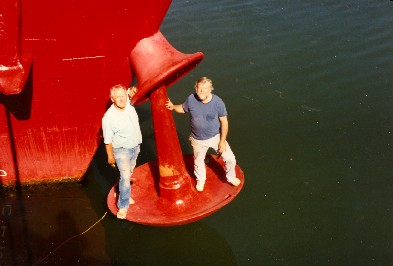 The mushroom anchor was designed in 1807 by Robert Stevenson, grandfather of the famous writer Robert Lewis Stevenson. At that time, the anchor was successfully used for the temporary light vessel PHAROS, during the construction of Bell Rock Lighthouse off Scotland.
The mushroom anchor was designed in 1807 by Robert Stevenson, grandfather of the famous writer Robert Lewis Stevenson. At that time, the anchor was successfully used for the temporary light vessel PHAROS, during the construction of Bell Rock Lighthouse off Scotland.
Due to its superior holding power, the "mushroom" became the standard anchor for use aboard lightships in this country. Varying in size from 3,000 to 8,000 pounds, the anchor would normally be stowed in the hawse pipe extending from the bow on the centerline of the ship. Frequently the spare anchors were also mushroom anchors, although the newer lightship often carried standard 5,000 pound "Navy" anchors. When deployed, the anchor would be attached to the end of a length of chain that would normally be let out to 7 to 8 times the depth of the water. When "stowed", the anchor would fit snuggly into the hawse pipe and the chain would be neatly "faked down" in the chain locker.
The photo shows the mushroom anchor from the Society's Lightship RELIEF, partially deployed and supporting Chuck Christenson and Warren Wilson who were both instrumental in the restoration project. To be accurate, the anchors were not normally lowered to the bottom along with the crew, as depicted in the photo.
Main Deck Restoration
The main deck restoration work required about 1100 man-hours expended over a period of approximately six months. None of the original deck coating could be saved, so as a result, the deck had to be taken down to the bare metal.

